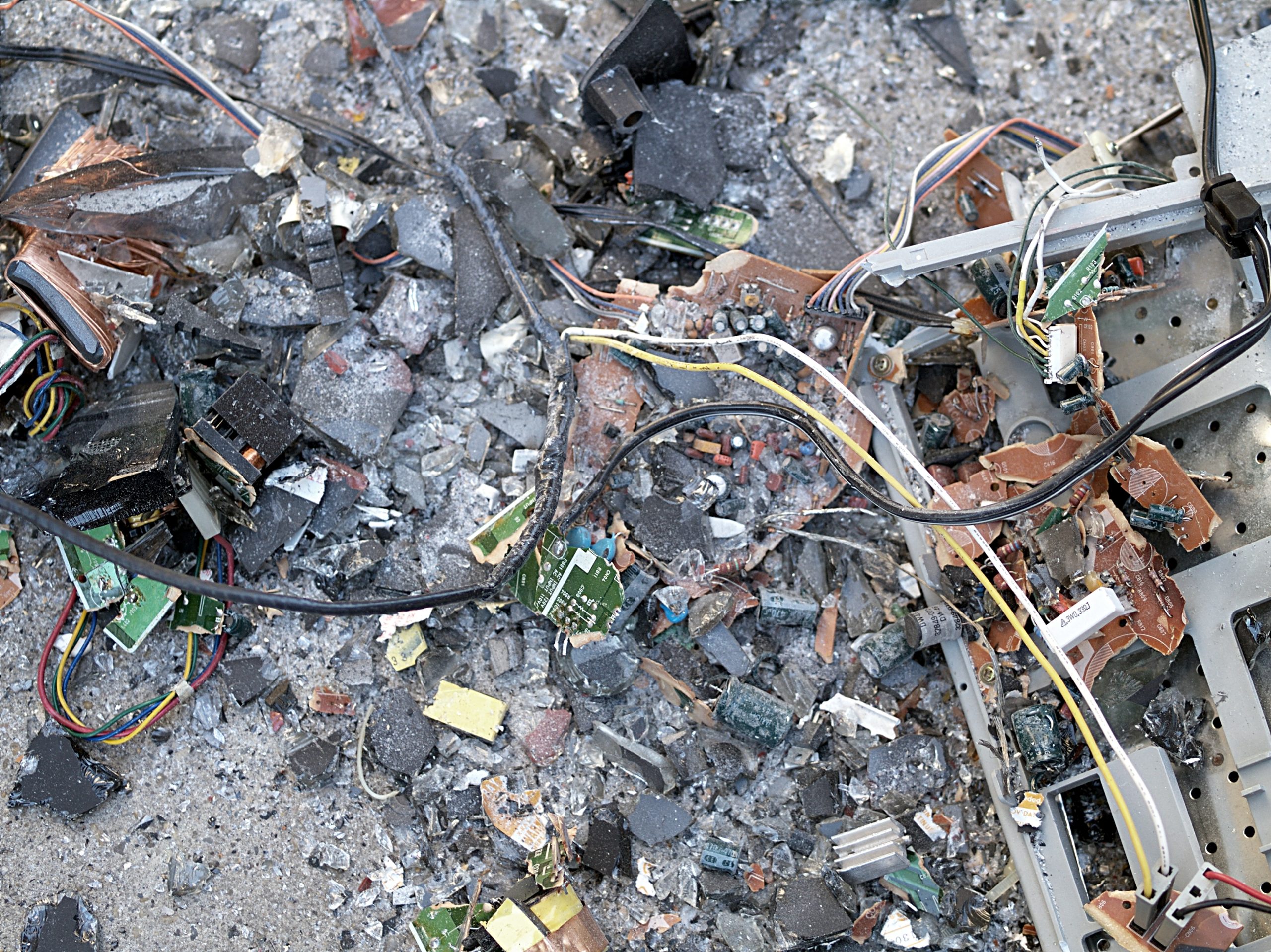
Representative image by takomabibelot, E-Waste in the Alley (Silver Spring, MD), CC BY 2.0
E-waste is one of the fastest-growing waste streams with an annual growth rate of 3-5%. New technology by IIT Delhi’s Chemical Engineering department has been developed as a sustainable solution to tackle the menace of e-waste. This technology is an outcome of the Department of Science and Technology, Government of India, funded project and has been further included for a scale-up in the project supported by the Office of Principal Scientific Advisor (PSA), Government of India under the Delhi Research Implementation and Innovation (DRIIV) initiative.
The developed technology will cater to the need of “Smart Cities,” “Swachh Bharat Abhiyan,” and “Atmanirbhar Bharat” initiatives of the Indian government via waste to wealth generation in decentralized units.
The adopted methodology is a three-step process: (i) Pyrolysis of e-waste (ii) Separation of metal fraction, and (iii) Recovery of individual metals.
India Education Diary reports that the team has successfully installed a 10 kg/h (Kilogram per hour) pyrolysis plant for e-waste recycling at IIT Delhi. It converts all types of e-waste to combustible gases of 28 MJ/kg (Megajoule per Kilogram) calorific value, liquid fuel of 30 MJ/kg calorific value, and a metal-rich solid residue.
The gaseous product obtained from the pilot plant is primarily composed of hydrogen and methane whereas the liquid product is rich in hydrocarbons suitable for energy generation. The pilot plant is also equipped with a scrubbing system that captures halogenated compounds traces in the combustible gases.
Picture Credit: takomabibelot, E-Waste in the Alley (Silver Spring, MD), CC BY 2.0



